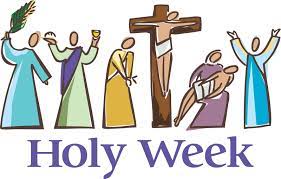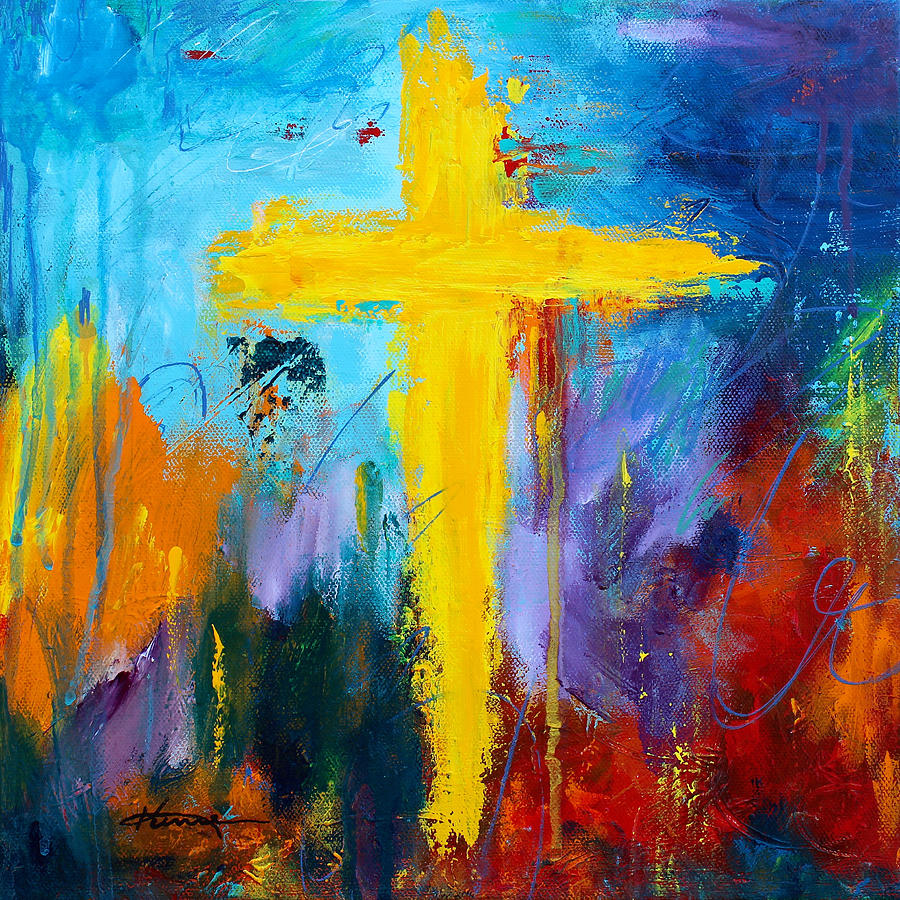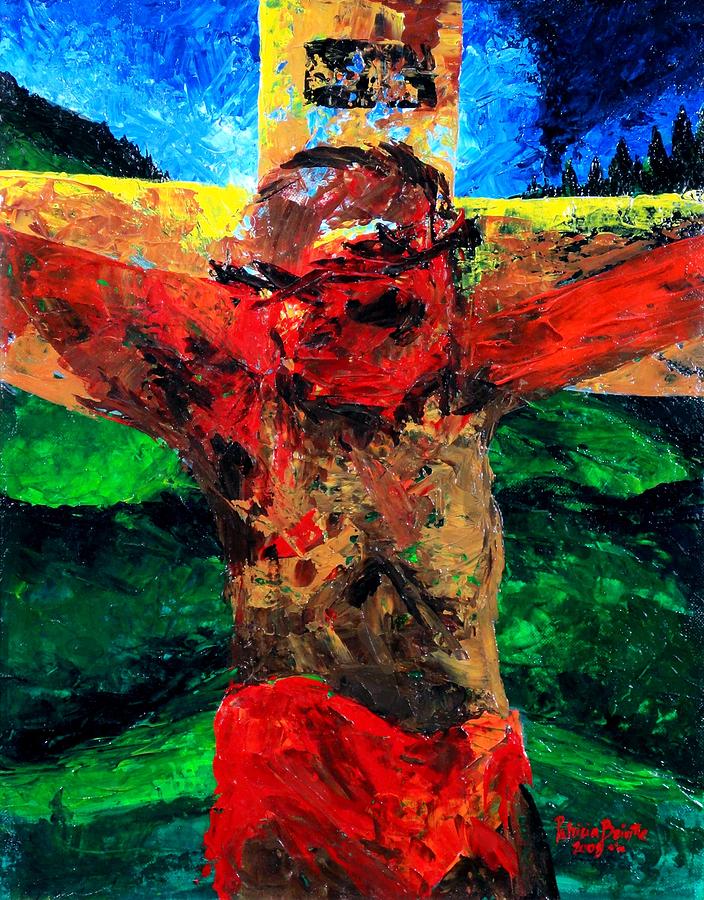|
Throughout the year, the Southern New England Conference of the United Church of Christ reproduces the Daily Lectionary for use by churches. These are the suggested readings for April 11th: Psalm 36:5-11; Isaiah 42:1-9; John 12:1-11; and Hebrews 9:11-15. I would encourage you to read these short selections as part of your Lenten practice.
The account of the anointing at Bethany intrigues me. There are many interactions between today’s Gospel account and the anointing stories in the Synoptics that cause scholars to wonder what is going on. Whatever happened, it was deemed an important event that was a meaningful part of Jesus’ final week of life, and awkward or not it could not be ignored. The Last Supper, the Garden of Gethsemane, the trial and crucifixion are much more well known, but the anointing at Bethany should not be overlooked as an important Holy Week event. In my NRSV Bible, 12:2 states that the anointing took place at the home of Lazarus in Bethany, but the original Greek does not say this. It only offers that “Jesus came to Bethany, where Lazarus was.” In Mark and Matthew, the anointing takes place at the home of Simon the leper. It does not say that Simon was once a leper. It says, “Simon the leper.” This implies that Simon was suffering from this disease, and according to Mosaic Law this would have defined Simon as ritually unclean. Additionally, anyone who came into contact with Simon would be judged unclean. Unclean means excluded from the people of God and also from the presence of God Himself. And yet, this is where Jesus dines only days before Passover. It is a beautifully symbolic gesture that speaks of inclusion rather than exclusion. It is a profound introduction to what will happen on Golgotha when Jesus becomes one who is unclean as He hangs upon the tree. (Deuteronomy 21:23) The cross is the costly proclamation of inclusion. Jesus suffers and dies as an outcast so that God can reveal that no one is an outcast. In the Lucan account, the woman who anoints Jesus’ feet is offered in a completely different context. The text begins at Luke 7:36. Here the woman is defined as a sinner, (7:37) and Jesus explains that since her sins were forgiven, therefore, “she has shown great love.” (7:47) This occurs in the home of a Pharisee, a strict adherent to the Mosaic Law. In this setting Jesus explains that the gift of forgiveness precedes and actually enables the woman’s ability to love. Place this in the context of the cross, and we hear the profound message that its unmerited forgiveness offered to all demands our loving response. Forgiveness is granted so that love may be offered. In another twist of the story, the oldest Gospel, Mark, tells us that “some” were displeased by the woman’s gesture, and in Luke it is the disciples as a group who are upset, but by the time the last Gospel is written, John’s, it is narrowed down to Judas Iscariot. John adds further that Judas was angered by the woman’s generosity because he held the common purse of Jesus and the Twelve, and Judas would steal from it. In the Synoptics, the reason for the displeasure is that the money could have been used to help the poor. Only in John do we read that Judas alone protested and that his motive was greed. Again, however, in my NRSV Bible, John 12:6 is in parentheses because this unique Johannine allegation is judged a later emendation not original to the text. This may point to the later Gospel’s efforts to deflect attention from the original telling in which the opposition to the extravagance was the misappropriated but laudable objection that the money could have been spent to help the poor. John may be trying to protect Jesus’ closest followers for not understanding the unique importance of Jesus, but the truth may be that John, the latest Gospel, is searching for someone safe to blame. Maybe it’s difficult to get it right all the time in our faith, and maybe John thinks it easier to simply blame the villain disciple rather than the disciples who just got this one wrong. The anointing happened, but the details have been managed in different ways for different purposes. What strikes me is that the historical Jesus right up until the time of His death was challenging the status quo and seeking to redefine what it means to be right with God. And even as the Bible was being composed, Jesus’ example, His lived gospel, remained a challenge, one that needed to be visited and revisited. Why should we think that Jesus has stopped confronting us with His new revelation? Even in these last days of Lent, this Holy Week, we should be humble enough to realize that to follow Jesus is a lifelong journey, but one worth every step we take. If you’d like, here is the link to the Southern New England Conference’s daily reading schedule: www.sneucc.org/lectionary.
0 Comments
Throughout the year, the Southern New England Conference of the United Church of Christ reproduces the Daily Lectionary for use by churches. These are the suggested readings for April 9th: Leviticus 23:1-8; Psalm 31:9-16; and Luke 22:1-13. I would encourage you to read these short selections as part of your Lenten practice.
Tomorrow is Palm Sunday and Palm Sunday is the beginning of Holy Week. At tomorrow’s worship Service, palms will be blessed and shared among those present. We hope that the palms are taken home and displayed so as to remind those who see them of Jesus’ triumphal entry into Jerusalem. The crowds greeted Jesus with shouts of “Hosanna!’, which means “Pray, save us!” in Hebrew. They acclaim Jesus as the “Son of David,” in other words, the long-awaited Messiah. The crowds are ecstatic as Jesus enters David’s city. They are expecting revolution not revelation. They are not looking to Jesus for what He stands for and preaches. They are instead rejoicing in the imagery and expectations that they themselves would foist upon Jesus. They are demanding a military leader who will conquer the Romans and reestablish the earthly empire of David. They realize that this cannot be accomplished by a man on a donkey, but they see in Jesus the anointed of God, the Messiah, and as such they expect not only victory but vengeance. God will fight for Israel, and the people are ecstatic. There is no way that the crowds could link this expectation to Jesus if they ever truly listened to His gospel or paid attention to how He lived. Even the disciples, on three separate occasions, could not fathom Jesus’ warning of impending betrayal and death. This is how powerful the people’s expectations were. They overwhelmed whatever Jesus said or did. They insisted that Jesus be the Messiah they wanted not the Messiah Jesus was revealing. In less than a week, the crowds’ cries of “Hosanna!” will morph into demands of “Crucify, crucify him” because they were forced to realize that Jesus was not what they wanted Him to be. He was accused of threatening to destroy the Temple rather than to protect it and restore the unity between it and God’s kingdom on earth. And so they turned violently against Jesus. This is the story of Holy Week. And through the life of the church, Holy Week is not only history. It is bringing this climactic last week of Jesus’ life to life. We try to share in the mystery that transcends time and still speaks and affects us today as people of faith. Think about today’s Gospel where we read: “So they went and found everything as [Jesus] had told them; and they prepared the Passover meal.” This is not a one-time occurrence. This is the beginning of a mystery that we still celebrate and share in today as church. These are timeless events because Jesus is timeless, and our faith is what allows us to touch and share in them. It is in this spirit that I invite you to join us as church, the called People of God. We invite you to share as part of our community on Palm Sunday, Maundy Thursday and Good Friday, and then to wait for the glorious news of Easter’s empty tomb. We would love to see you in person, but if this is not possible or is not your choice, please send an email to randyc1897@gmail.com for the login to our worship Services. Let’s give of our time and let Holy Week be holy. If you’d like, here is the link to the Southern New England Conference’s daily reading schedule: www.sneucc.org/lectionary. Throughout the year, the Southern New England Conference of the United Church of Christ reproduces the Daily Lectionary for use by churches. These are the suggested readings for April 8th: Psalm 31:9-16; Isaiah 54:9-10; and Hebrews 2:10-18. I would encourage you to read these short selections as part of your Lenten practice.
Today is the sixth Lenten Friday, the last one before Good Friday. In a liturgical season dedicated to the cross, Lenten Fridays are even more focused. Today we are asked to read from Hebrews. This is an amazing Epistle and one with a rather unique Christology, which is the study of Jesus as the Christ, the Messiah and Saviour, and as the Son of God. Hebrews’ Christology emphasizes the humanity that God accepts in the person of Jesus of Nazareth. It is this humanity that allows Jesus to be the unique and perfect intermediary between God and creation. In Jesus, God experiences our lives, and we share in the perfect revelation of God through Jesus. The Incarnation, the full human nature that God accepts in Jesus, is not a notion limited to Christmas. It defines the entire life of Jesus of Nazareth, and a part of His life is His death. The Incarnation is just as powerfully a part of Jesus at His birth as it is on His cross. The fear Jesus experienced in the Garden of Gethsemane, the anguish He felt as His followers deserted and even betrayed Him, the pain He endured on the torturous cross, the humiliation He suffered as people mocked Him as He died slowly and publicly, and even the sense of doubt as Jesus yelled, “My God, my God, why hast Thou forsaken me?” are all experienced and remembered for eternity by God. For the Incarnation to be authentic and meaningful, Jesus could not be protected from the vilest things that humans do to one another. Jesus is able to empathize with us in all aspects of life, the good and the bad. And this is what Hebrews conveys when today we read: “Therefore, [Jesus] had to become like his brothers and sisters in every respect, so that he might be a merciful and faithful high priest in the service of God, to make a sacrifice of atonement for the sins of the people. Because he himself was tested by what he suffered, he is able to help those who are being tested.” Since Jesus endured even the worst of our human nature, now the glorified Jesus “is able to help those who are being tested.” We are confronted with the brutality and savagery of people in a very direct way at present as we see pictures and hear stories out of Bucha, Ukraine. These are prime time news, but other atrocities such as these also happen and go unnoticed by the general public. We can wonder where God is at such moments. The cross is the lived, historical revelation that Jesus knows such pain so that Jesus can be turned to for comfort when such pain strikes. Jesus has endured human barbarity. And because of the cross, Jesus can offer at-one-ment to those who continue to endure such barbarity. We often hear of atonement, that Jesus forgives our sins, but many times the more powerful message is not atonement, but at-one-ment, that God in Jesus is at-one with us in any circumstance of life, including the most heinous. The world can be better by following the example of Jesus’ lived gospel which was proclaimed right up to and through Jesus’ death, but in the meanwhile we have Jesus’ at-one-ment, that when we are most desperate, when people are their most despicable to other people, we have a Saviour who is as close as our next breath and remains close even after our last breath, which is God’s fulfilment of Isaiah’s prophecy: “For the mountains may depart and the hills be removed, but my steadfast love shall not depart from you, and my covenant of peace shall not be removed, says the Lord, who has compassion on you.” On this sixth Lenten Friday, may we think about cross and how it brings Jesus so close to us in our lives that not even life’s worst nightmares can separate us from His steadfast presence, and that the cross offers us a route of escape from the worst consequences of the vilest depths of human nature if we choose to take it by following the gospel’s example of turning against our natural inclinations and towards are equally powerful inclinations as made in the image of God. If you’d like, here is the link to the Southern New England Conference’s daily reading schedule: www.sneucc.org/lectionary. Throughout the year, the Southern New England Conference of the United Church of Christ reproduces the Daily Lectionary for use by churches. These are the suggested readings for April 7th: Psalm 31:9-16; Isaiah 53:10-12; and Hebrews 2:1-9. I would encourage you to read these short selections as part of your Lenten practice.
John Meier wrote a two-volume study of the historical Jesus that is honest and refreshing. He called it “A Marginal Jew: Rethinking the Historical Jesus.” It was published 35 years ago, but I think it remains current and still provocative. Toward the end of Vol. 1, Meier attempts to plot a chronology of Jesus’ life. This is far more difficult than it may sound because the historical Jesus was a minor figure on the world stage during His lifetime. For the vast majority of that lifetime, Jesus was a nondescript carpenter in Nazareth. There was no BC or AD when Jesus walked the earth. These markers came along a half a millennium after the life of Jesus as a monk by the name of Dionysius Exiguus attempted to count back to the days of Jesus – and he was most likely off by several years. Therefore, scholars must make inferences based on the occasional important historical events that overlap with the story of Jesus. Meier has bone fides that I trust as a biblical scholar. He argues that the Passover of Jesus’ final days was the one in 30AD. On Thursday evening, April 6th, Jesus shared a solemn final meal with His disciples. Jesus was arrested in the Garden of Gethsemane on the night of April 6-7 and then handed over to the Roman governor Pilate in the morning of Friday, April 7th. Pilate condemned Jesus quickly. He was then scourged and crucified outside of Jerusalem, dying on the cross before evening of Friday, April 7, 30AD. Today, according to this scholar’s reckoning, is, therefore, the 1,992nd anniversary of Jesus’ death. The first believers in Jesus, this marginal Jew, were people who were also Jewish, and who looked upon Jesus as the long-awaited Jewish Messiah, which by definition made them marginal Jews, as well. As we have mentioned several times this Lent, none of them ever expected a crucified Messiah. They were forced to reconcile their faith in Jesus with the theology of God’s Saviour. As they struggled with this dilemma, they were drawn immediately to the passages about the Suffering Servant found in the book of Isaiah. One of those passages is shared with us today: “The righteous one, my servant, shall make many righteous, and he shall bear their iniquities. … Because he poured out himself to death, and was numbered with the transgressors; yet he bore the sin of many, and made intercession for the transgressors.” These writings from the time of Israel’s Babylonian exile came to give meaning to the cross. They offered context for those first believers who were bewildered by the crucifixion. It helped to transform Jesus’ execution from scandal to sacred. For remember, in the oldest Gospel account, everyone abandons Jesus on April 7th. They all believed Him and His ministry to be finished on April 7th. There are indications that His closest followers returned quickly to their previous lives in Galilee, the lives they led prior to meeting the Marginal Jew. This abandonment, for me, adds to the authenticity of the empty grave experience. The ones who had given up on Jesus become the ones who evangelize for Jesus. Something extraordinary must have happened to generate such a radical change, and the Gospels tell us that the something extraordinary was Jesus’ resurrection. On this possible actual anniversary of Jesus’ crucifixion and death, let us struggle still with its meaning for us and our lives. Let us search for the ways in which it can be transformative for us. 1,992 years ago believers realized that all God’s promises had not been fulfilled, and yet there was Jesus. The author of the Epistle to the Hebrews says, “As it is, we do not yet see everything in subjection to them, but we do see Jesus …” There is much that needs to be done in Jesus’ name and through Jesus’ grace, but hopefully, especially at this holy time of the year, “we do see Jesus.” We’re but ten days from the mystery of Easter, let’s not let these days pass by without our efforts to come closer to the cross so that we can also come closer to the empty tomb. If you’d like, here is the link to the Southern New England Conference’s daily reading schedule: www.sneucc.org/lectionary. Throughout the year, the Southern New England Conference of the United Church of Christ reproduces the Daily Lectionary for use by churches. These are the suggested readings for April 6th: Psalm 20; Habakkuk 3:2-15; and Luke 18:31-34. I would encourage you to read these short selections as part of your Lenten practice.
I’m no fan of comic book hero movies. I guess another one has just come out. I have heard that there are metaphysical differences between Marvel and DC comic book heroes, and I’m surprised even that bit of news stuck in my memory. I don’t enjoy fantasy very much. I was attending a talk at my Masonic Lodge that shared some of our tenets through analogies to Star Wars. When I mentioned to the brother in front of me that I had never seen a single Star Wars film, he turned around in disbelief. Fantasy heroes are fun escapes, and from what I have heard they can be mythical lessons not that unsimiliar to those of the ancient Greek gods. What I find uninteresting about comic book movies is that they misrepresent the idea of the heroic and heroes (my apologies to those fans who could spend hours explaining to me how wrong I am). Take another example. When GI Joe first came out as a doll – I’m sorry, an action figure, he was an ordinary looking American soldier. He has been transformed into this Hulk-like super-soldier. The original message behind GI Joe is the hero and heroic in the ordinary American soldier who conquered the blight of Nazism. To morph GI Joe into an unrealistic, impossible fighting machine, again to my mind, denigrates the heroic found in the real men and women who selflessly sacrificed for a cause worthy of that sacrifice. When say a Peter Parker gets into a fight with a bully, what’s so interesting about someone with superpowers defeating someone without them? Isn’t this just super power envy? “How cool that would be.” But can it also have a negative impact along the lines of it takes superpowers to make an heroic difference, that ordinary is almost helpless and hopeless, that fate is for real, that we can’t make a difference and change the world? I know it sounds like I’m a fun-sucker, but these are the things I think about when I see commercials for yet another comic book movie. Escapism is fun, but it’s no answer to the world’s problems. Heroes and the heroic are more aptly seen, for instance, in the ordinary folk in Russia who have dared to protest the war even at the cost of a possible 15 years in prison and the ruination of prospects to lead a productive life in this now despotic nation. Heroes and the heroic inspire by their bravery even when they lose. Take the impact of the ordinary Ukrainian soldier who cursed out a Russian worship rather than surrender his tiny island outpost. His words have galvanized a nation that needs hope and is finding it in the strength of its ordinary people. And now let’s think about Jesus. Jesus is extraordinary, but as it says in Philippians, “Though he was in the form of God, [Jesus] did not regard equality with God as something to be exploited, but emptied himself, taking the form of a slave, being born in human likeness.” (2:6-7) The hero and heroic in Jesus is that in Him God has lived our ordinary life. And how strange and unexpected all of this was for remember the People of God were awaiting a powerful Saviour, not one “taking the form of a slave.” Take today’s passage from the prophet Habakkuk as but one example: “In fury you trod the earth, in anger you trampled nations. You came forth to save your people, to save your anointed.” Is it any wonder then that when Jesus tries to explain to His closest followers that He must suffer and die that “They understood nothing about all these things; in fact, what he said was hidden from them, and they did not grasp what was said.” The disciples had a lifetime expectation of an otherworldly Saviour. Jesus, on the other hand, empties Himself of the otherworldly, to be truly the hero and heroic in the worldliness of Jesus of Nazareth. The disciples could not grasp this prior to the crucifixion. People of faith still today have trouble with Jesus as the one who saves us by showing us and helping us to be what is possible as the People of God. Some tend to think of the cross, and it is in the Bible, as only this otherworldly intervention that redeems us, that pays the price of our salvation, but the cross is also a very human Jesus showing us heroically how we can work with God to save ourselves and creation. The cross calls out the hero and heroic in each of us. If we think of the cross as only what Jesus did, then we are locked into the confusion of the disciples as in today’s Gospel. In these waning days of Lent, let us look to the cross as inspiration for how we are to live heroically. If you’d like, here is the link to the Southern New England Conference’s daily reading schedule: www.sneucc.org/lectionary. Throughout the year, the Southern New England Conference of the United Church of Christ reproduces the Daily Lectionary for use by churches. These are the suggested readings for April 5th: Judges 9:7-15; Psalm 20; and 1 John 2:18-28. I would encourage you to read these short selections as part of your Lenten practice.
Today’s New Testament passage offers a cautionary tale about judgment. Raymond E. Brown’s The Community of the Beloved Disciple was an eye-opener for me. Brown celebrated the message of Christian love found in the Johannine Epistles, but he acknowledged also that it was a laudable love limited, however, to the members of the community alone. The Johannine community was charism based. It trusted in the inspiration of the Spirit to guide and lead every single member of the community. Thus, we read passages such as: “… and all of you have knowledge. I write to you, not because you do not know the truth, but because you know it … you do not need anyone to teach you.” The Spirit was pervasive and also unwieldly. To disagree with the community was tantamount to disparaging the Spirit even though the disagreement would be born of the same Spirit-inspired knowledge and truth – and thus the unwieldly nature of this model. We read today: “Children, it is the last hour! As you have heard that antichrist is coming, so now many antichrists have come. From this we know that it is the last hour. They went out from us, but they did not belong to us; for if they had belonged to us, they would have remained with us. But by going out they made it plain that none of them belongs to us.” To abandon the community warranted the judgment that they were “antichrists” all along. Brown presents a persuasive argument that the Johannine community even considered other Christians, particularly Christians in Pauline churches, as being part of these “many antichrists.” The Johannine community was suffering diminishment. Historically, the Johannine communities have disappeared, and Christian churches today are the offspring of the Pauline church model. Members were leaving the fold for other Christian communities, possibly more stable Christian communities. And as is often the case, when religious bodies, especially fervent ones, face loses they claim that their situation is due to supernatural evil. They situate their position within the cosmic battle between good and evil. They encourage their remaining adherents to stick with their threatened community so that “we may have confidence and not be put to shame before him at his coming.” In other words, Jesus’ triumphal end-time coming is approaching quickly, therefore, remain steadfast for a short while longer in order to receive the promised eternal glory. The obvious difficulty with this teaching is that it is 2022. The expected imminent return of Jesus did not happen. Brown draws out the edifying message of Christian love from the Johannine communities, but is equally dedicated to the sacred text when he warns against faith’s lure to a rush to judgment. The Christian ethic within the community is uplifting and when its passages are read they share what is sublime in our faith, but there is the unspoken – and for the biblical author the unrecognized – warning against imagining that every difference of opinion or separate sacred path chosen is the work of antichrists attacking the one true community. As we look to Jesus on the cross in these last two weeks of Lent, I’d ask us to consider the lack of judgment. Last week we spoke about “Father forgive them for they know not what they do.” Let us contrast the consistently lived example of Christ even to the extent of His death on the cross with that of the rush to judgment in the Johannine Epistles that spoke so unnecessarily dramatically about the coming of the Saviour in judgment. There are Old Testament and New Testament prophesies about the return of an angry God, but the lived example that we have in the person of Jesus reveals something quite different. I wonder if the prophesies are human contrivances that fulfill our need for judgment rather than the harder work of our trying to understand the contrarian message and example of Christ, especially Christ crucified. If you’d like, here is the link to the Southern New England Conference’s daily reading schedule: www.sneucc.org/lectionary. Throughout the year, the Southern New England Conference of the United Church of Christ reproduces the Daily Lectionary for use by churches. These are the suggested readings for April 4th: Exodus 40:1-15; Psalm 20; and Hebrews 10:19-25. I would encourage you to read these short selections as part of your Lenten practice.
Today’s Exodus passage provides details that give us a glimpse of how the sacred was conceived in ancient Israel. Sacred was so “other” that it needed to be kept separated from the mundane. If the two came into an uncontrolled connection, the reaction would be disastrous. I enjoy when scientists share their work in a layperson’s vocabulary, and I especially enjoy physics. The scientists who study the earliest moments of universal creation amaze me with how well they understand the process that brought everything into existence after the Big Bang some 13.8 billion years ago. One of their quandaries has been why creation didn’t simply annihilate itself. Matter and anti-matter (yeah, the stuff from Star Trek) completely destroy each other when they come into contact so if both were produced at the Big Bang how then am I hear typing this Lenten Blog. In response, the scientists posited that particles of matter slightly outnumbered anti-matter particles, and then they went looking for the evidence. By slightly I mean there was enough matter left over to create everything. But that image of matter and anti-matter being so fundamentally different that they would annihilate each other if they came into contact is like the idea of the sacred and profane in Exodus. The divine presence in the world needs to be kept at a safe distance from the worldly to protect the worldly. It is for this reason that the Ark of the Covenant is kept shielded in the Tabernacle (which is also called the Tent of Meeting but originally the Tent of Meeting was a prophetic enclave separate and separated from the cultic Tabernacle). It is for this reason that Aaron and his descendants are the only ones permitted to attend to the divine presence, there to be assisted by the tribe of Levi. A great deal of attention went into the maintenance of protecting not the sacred, but everything else from the sacred. This is where the phrase “fear of the Lord” emerges. It was a frightful thing to come into the presence of Yahweh. It may sound surprising, but there is only one New Testament priest mentioned in Scripture, and it is Jesus as expressed in the Epistle to the Hebrews. There is mention of Jewish Temple priests converting to faith in Jesus (Acts 6:7), but they were Temple priests not Christian priests. Again, the only New Testament priest mentioned in Scripture is Jesus in the Epistle to the Hebrews. Jesus’ priesthood astonished the earliest Christians because it broke down the separation between sacred and profane. The environs that were once limited to the priestly caste and with deliberate caution are now open to everyone, Jew and Greek, male and female, free and slave, based on but one belief: “[W]e have confidence to enter the sanctuary by the blood of Jesus.” Jesus on the cross is both priest and sacrifice. His death on the cross proves such a great love and connection between God and creation that forevermore Christians can celebrate the closeness of God not as “fear of the Lord,” but as the love of Christ. This in turn leads the author of Hebrews to write: “And let us consider how to provoke one another to love and good deeds, not neglecting to meet together, as is the habit of some, but encouraging one another …” In other words, Jesus loves us enough to accept the cross so we should be inspired to live lives of Christian love. The community of the church is called upon to “provoke one another” in their worship gatherings to love and also to do “good deeds.” The love of Christ exemplified perfectly on the cross is amplified by the gathering of the church and is expressed in a Christian’s love and good deeds. This “encouraging one another” becomes the new reaction of the meeting of sacred and secular, not annihilation, but rather the catalyst to truly living as people who believe and act accordingly in a loving, crucified Saviour. If you’d like, here is the link to the Southern New England Conference’s daily reading schedule: www.sneucc.org/lectionary. |
NewsFaith, love and chitchat. Categories
All
Archives
February 2024
Follow
|
|
SERVICE TIMES
Sunday 9:30-10:30am Children Sunday School 9:30-10:30am Nursery care available during worship DONATE Make a single or recurring contribution by clicking here |
FOLLOW
|








 RSS Feed
RSS Feed
